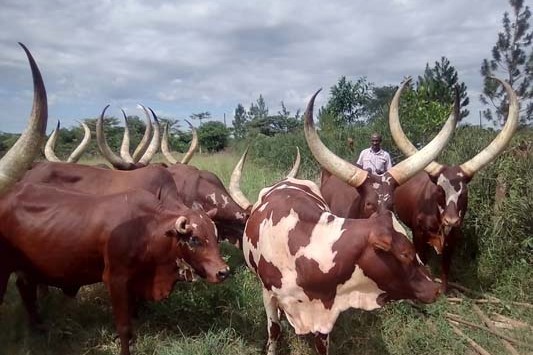By ANNE LEE
Ryegrass may have a role to play in the future in curbing methane and greenhouse gas (GHG) emissions and in creating greater tolerance to a changing climate.
Germinal New Zealand general manager Sarah Gard says ryegrass underpins our whole pastoral system and as the climate changes and farmers’ needs change our pastures will have to adapt too.
But that doesn’t mean ryegrass will be on the outer – on the contrary it could hold some of the solutions.
Breeding for ryegrass with higher lipid (fat) content is underway as is the crossing of perennial ryegrass with more drought-tolerant fescue to create a new perennial festulolium.
Both research programmes are being carried out by the Germinal Horizon team of breeders and scientists at the Institute of Biological, Environmental and Rural Sciences (IBERS) in Wales.
Sarah says Germinal’s point of difference has been its Aber High Sugar Grasses which are proven to have a higher water soluble carbohydrate content.
Slowing down gives rumen microbes more time
to make use of the proteins leading to greater
nitrogen use efficiency.
That can also help environmentally by providing rumen bugs with more energy so they can make greater use of the protein in ryegrass. While Sarah warns that although selecting for higher lipids is going on within the IBERS breeding programme it could be some time before there are any major, concrete results.
Standard ryegrass has between 2-4% lipid content and the aim is to increase that to 4-6%.
Work by the New Zealand Pastoral Greenhouse Gas Research Consortium (PGGRC) has reported that higher dietary lipid concentrations in cattle can reduce methane emissions by up to five percent for each one percent increase in lipid content.
Much of the work to date has been on manipulating cattle diets using supplements and there’s still work to be done on testing the effects of lifting lipid levels in pastures.
Work at IBERS though suggests that increasing the lipid content of grass reduces methane emissions from ruminant livestock by changing rumen fermentation patterns and breaking down protein more efficiently, Sarah says.
The Germinal Horizon team at IBERS believes there is potential for increased animal productivity, a decrease in GHG emissions, particularly methane, benefits in animal health and fertility and benefits for meat quality and healthy eating.
Sarah says the breeding of higher lipid grass at IBERS is done using conventional plant breeding techniques.
Those conventional breeding techniques have also been used to breed the festulolium AberRoot by crossing a high sugar perennial ryegrass with a fescue from North Africa.
One of the aims of festulolium breeding programmes is to breed a grass with the digestibility and quality of High Sugar Ryegrass (Lolium. perenne) with the greater rooting mass and depth and improved survivability of fescue – particularly in terms of drought and heat tolerance.
Sarah says initial data from IBERS shows that AberRoot has characteristics which slow down proteolysis – the breakdown of protein – in the rumen.
The slowing down gives rumen microbes more time to make use of the proteins leading to greater nitrogen use efficiency.
Sarah says Germinal will trial the AberRoot cultivar in NZ in the near future to make sure it performs well under NZ conditions.
It has the potential to be more resilient than conventional perennial ryegrass but extensive trial work is necessary under our conditions to check this.
Some of that trial work will be carried out on Germinal’s new research and innovation station near Lincoln in Canterbury.
The company has previously been running trials and carrying out breeding studies on land to the West of Christchurch but having its own, larger scale property will allow more work to be done.
Germinal has bought a specialist Haldrup plot forage harvester from Germany which can measure drymatter yields as it harvests the forage.
It will also have near infrared reflectance spectroscopy (NIRS) technology onboard so pasture composition can be tested immediately.
The first trials will be sown at the new site in autumn and Sarah says they’ll be continuing their work on the high sugar ryegrass varieties looking at further enhancing the persistence characteristics the high sugar grasses are known for.
Phosphorus efficient clovers
They will also be carrying out trials on clovers where breeding aims to increase phosphorus efficiency.
Clovers are high users of phosphorus as it’s a key element in the production DNA within the root nodules.
The trials will include further developments on AberLasting, Germinal’s Caucasian clover crossed with a white clover, that gives increased drought tolerance as well as cold tolerance.
Red clovers will also be trialled with the aim of improving persistence while maintaining or enhancing the polyphenol oxidase compounds which are naturally protective of lipids.
The higher levels of polyphenol oxidase in the red clover help slow down the breakdown of protein so rumen bacteria can make more use of it and less nitrogen is excreted. Sarah is a Lincoln University agricultural science honours degree graduate and has been actively involved in wider industry plant breeding trials.
Germinal is a member of the New Zealand Plant Breeders Research Association (NZPBRA) and Sarah has been working on the committee running the nutritive value trials as part of the National Forage Variety Trials (NFVT).
Previous nutritive value trials showed Germinal grasses AberGreen and AberMagic topped the year one results in terms of metabolisable energy (ME) and water soluble carbohydrates.
Ryegrass can definitely be part of the solution when it comes to meeting environmental challenges, Sarah says.
It’s through sound plant breeding that the characteristics which help solve those challenges can be enhanced without impacting on the fantastic productivity and profitability benefits ryegrass gives, she says.






